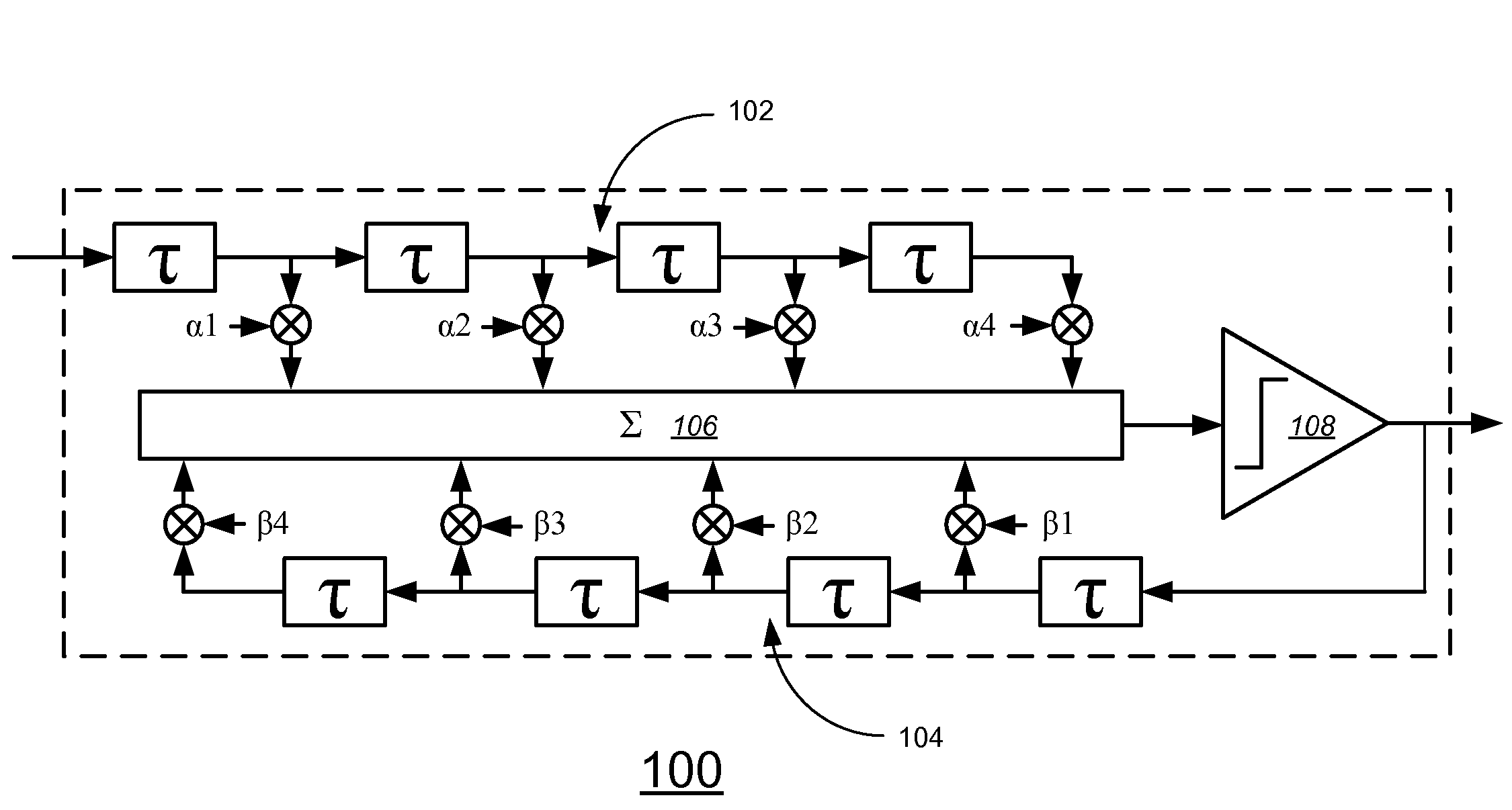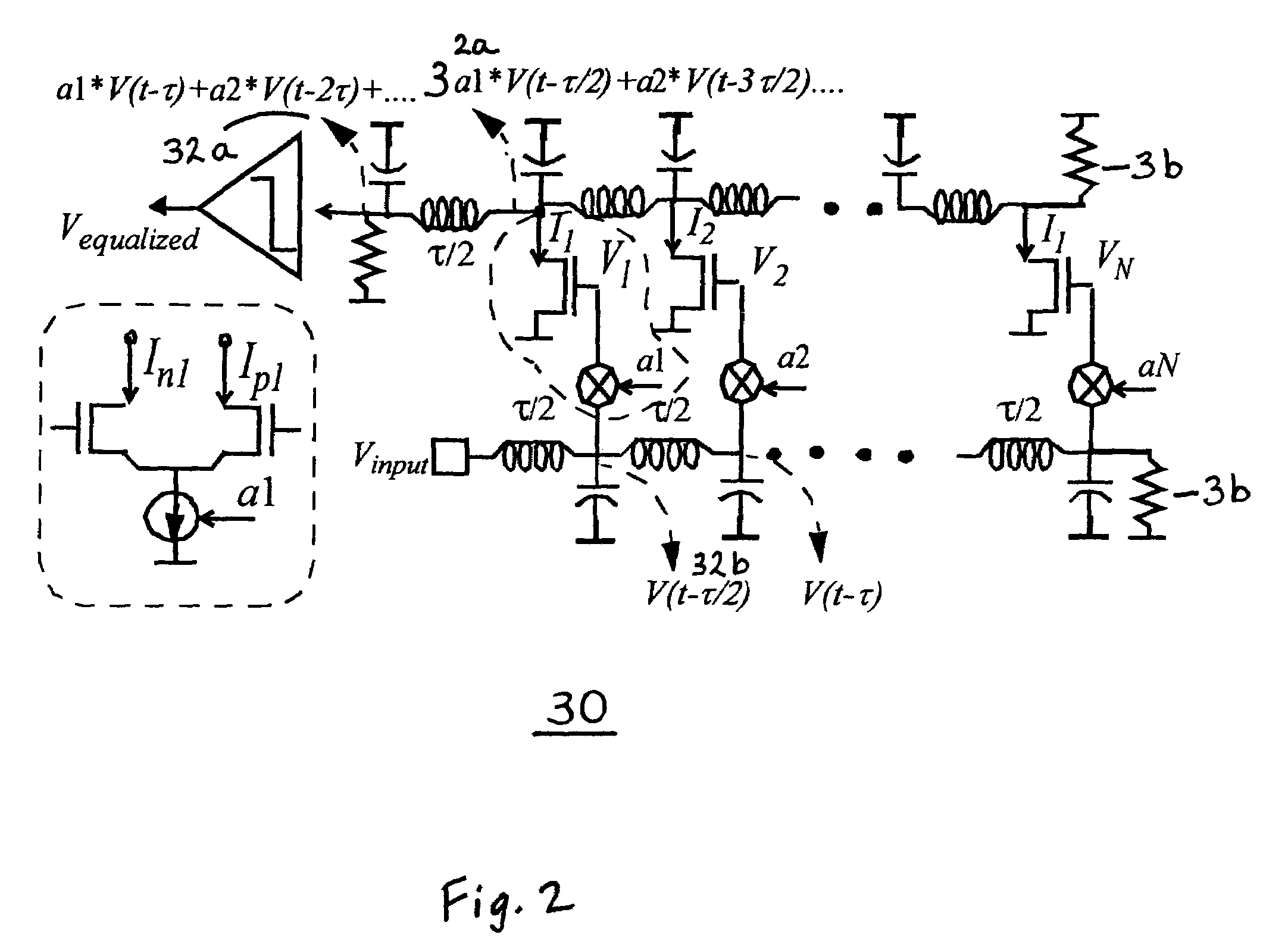Method and apparatus for cancelling inter-symbol interference (ISI) within a communication channel
a communication channel and inter-symbol technology, applied in the field of circuits, can solve the problems of inability to implement equalizers in traditional digital or analog methods, burn a lot of power, and considerable power,
- Summary
- Abstract
- Description
- Claims
- Application Information
AI Technical Summary
Benefits of technology
Problems solved by technology
Method used
Image
Examples
first embodiment
[0018]FIG. 1 illustrates a FIR filter 10 in accordance with the present invention. The required delay for FIR filter 10 is created by passing the signal directly through a transmission (delay) line 12 on chip. The significant advantage of the passive delay line 12 is its zero power consumption, while other active forms of delay elements especially at multi-GHz range consume significant power. However, generating reasonable delay times (tens of psec and above) using just plane metal lines requires extremely long lengths, making on-chip implementation impractical. Therefore, lumped LC transmission lines 14a-14n are utilized to achieve the range of delays expected for the FIR filter.
[0019]The multiplication stage is performed by passing the output signal from each delay stage through an attenuator that can continuously attenuate the signal from no attenuation (αi=1) to complete blocking (αi=0). The attenuated signal is then applied to a GM stage / transistor stage 16a-16n that converts t...
second embodiment
[0022]FIG. 2 illustrates a FIR filter 30 in accordance with the present invention. In this design, the effective number of delay stages are broken into two branches 32a and 32b where each branch has half the total delay, and thus signal attenuation in each passive branch before amplification by an active stage is half. As FIG. 2 clearly demonstrates, in this alternative embodiment, the signal moves in two opposite directions, gets half of the required delay through the bottom branch, is multiplied by the tap coefficient, and added to the top branch where it gets the second half of the delay. One advantage of this approach compared to the FIG. 1 FIR filter 10 is the higher power dissipation as the top branch has to have two sides terminated and therefore twice as much power for the same termination resistor 36 value is dissipated. However, by careful design, one can use larger (double) termination resistor for the top branch and adjust the LC delay stages accordingly to re-gain the e...
PUM
 Login to View More
Login to View More Abstract
Description
Claims
Application Information
 Login to View More
Login to View More - R&D
- Intellectual Property
- Life Sciences
- Materials
- Tech Scout
- Unparalleled Data Quality
- Higher Quality Content
- 60% Fewer Hallucinations
Browse by: Latest US Patents, China's latest patents, Technical Efficacy Thesaurus, Application Domain, Technology Topic, Popular Technical Reports.
© 2025 PatSnap. All rights reserved.Legal|Privacy policy|Modern Slavery Act Transparency Statement|Sitemap|About US| Contact US: help@patsnap.com



